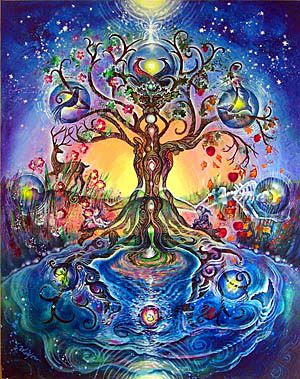Dear Integral Meditators,
If you want to be good at something, then you need to have a clear model around which you base your attempts to improve. The article below explains a very simple three stage model that you can apply to your meditation practice to improve its effectiveness.
In the spirit of deeper competence and confidence,
Toby

Intending, Abiding, Determining – Three Aspects of Effective Meditation
For your meditation to be effective and integrative it needs to have three parts:
- You need to begin with a clear idea of the state of mind that you are seeking to cultivate and develop in your meditation
- You need to become competent at holding/relaxing into that state of mind in formal meditation for an extended period of time
- You need to emerge from your meditation with a clear determination as to how you are going to continue integrating your object of meditation into your daily life.
You could call these three aspects intending, abiding and determining.
Intending: During this first stage of intending you need to begin with a clear intention or goal as to the state of mind that you are going to cultivate in meditation, and then contemplate different ways in which you can actually cause that state of mind to arise. So for example if your meditation is simply to cultivate a relaxed state of body-mind, then you need to be clear about that, and focus your efforts and contemplation toward achieving that goal. Similarly if your meditation is onappreciation or on cultivating confidence then your intention should be clear about this, and the initial contemplation stage of your meditation should be directed toward this.
Abiding: In this middle stage of the meditation, now that you have cultivated the state of mind that you want, your goal now becomes to abide and move deeper into that state of mind. So:
- If you have cultivated a relaxed state of body and mind, your focus now becomes to enjoy that experience of relaxation and move more deeply into that state, gradually letting go of successive layers of mental, emotional and physical tension.
- If you have generated appreciation, your goal now becomes to move deeper into that state of appreciation, enjoying it and embedding it more and more deeply into your experience
- If your goal was an experience of self-confidence, now that you have that feeling you now ‘bathe’ in it, making it a state of mind that you are more and more familiar with using your meditative focus
One of the main benefits here is that by focusing on something in a deep way during meditation you can make it a part of your personal experience much more quickly. You can literally take any quality you want to develop and use meditation to accelerate your development of it.
Determining: This final stage of meditation comes at the end. As you bring your session to a close you should have a clear determination regarding what you are going to do in your daily life to keep cultivating that state of mind. To use our three examples:
- As I arise from my relaxation meditation I can determine to be more mindful of my stress levels as I go about my day, and not allow it to spiral out of control in the way that it has done in the past.
- As I arise from my meditation on appreciation I determine to use what happens to me in the day to re-enforce my appreciation for the good fortune I enjoy in my life, to mindfully notice events that re-enforce my feeling of appreciation.
- As I arise from meditation on self-confidence I have a clear sense of the feelings of confidence that I want, and make a mental note of times/events in the day that threaten to sabotage that confidence, so that when they happen I am ready.
If we lack this third stage, then there is a big danger that a gap appears between our formal meditation and our everyday experience. Our conscious determining at the end of our meditation ensures that we keep on attempting to bridge the gap between our sitting meditation and our actual life experience.
Related Articles:
The Five Stages of Meditation Practice from Beginners to Advanced
Five Inner Skills we develop Through Meditation
© Toby Ouvry 2015, you are welcome to use or share this article, but please cite Toby as the source and include reference to his website www.tobyouvry.com
Upcoming Courses at Integral Meditation Asia in May:
Friday 29th May 7.30-9.30pm – Integral Meditation Session @ the Reiki Centre – Travelling deeper into the present moment through integral meditation
Saturday 30th May, 2.30-5.30pm – Enlightened Flow: Finding the Ultimate Relaxation and Release from Stress
Integral Meditation Asia










